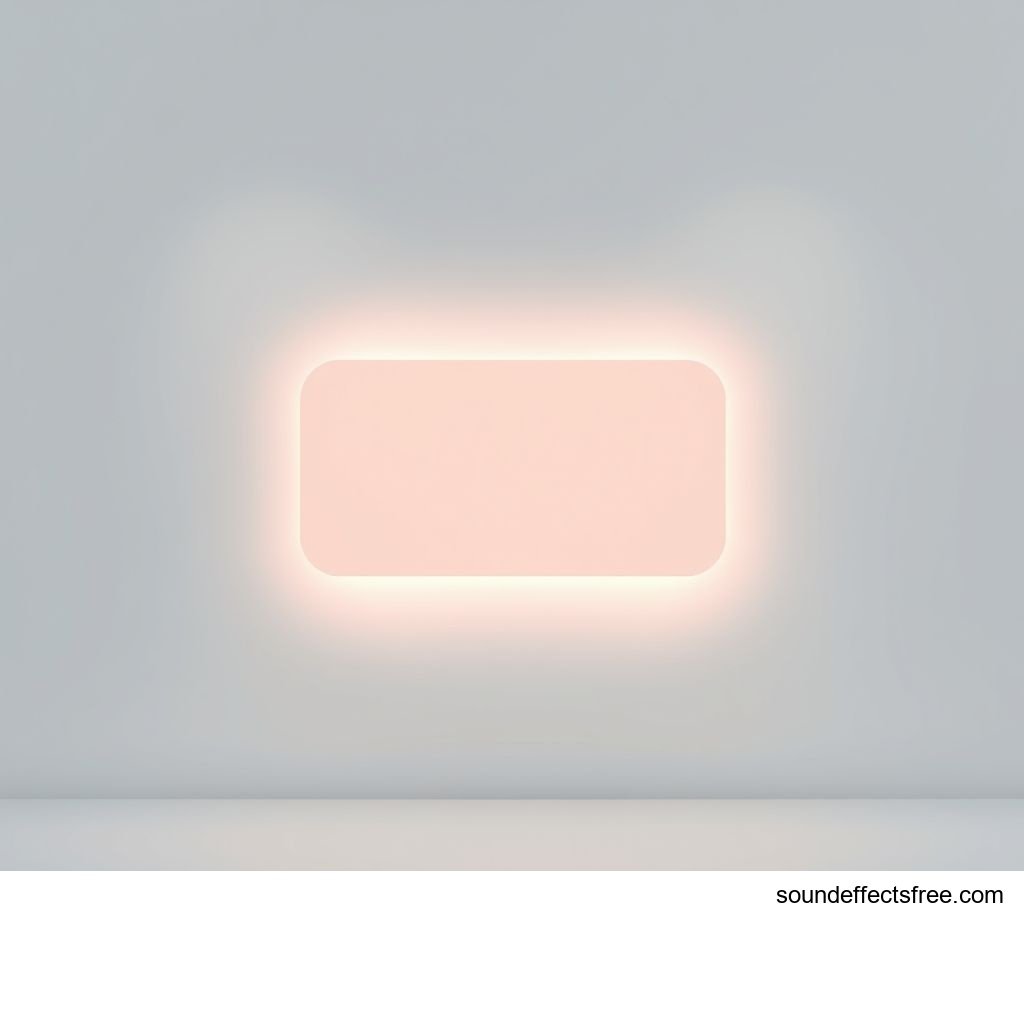UI Alert Blink: Enhancing Digital Feedback
Explore the "UI Alert Blink" sound. This subtle audio effect enhances digital experiences. It provides non-critical UI feedback without alarm.
The "UI Alert Blink" is a key element in modern sound design. It provides quick, subtle feedback. This audio effect signals a non-critical update. It avoids startling the user. Good interfaces prioritize user comfort. This sound is part of effective digital communication. It ensures a smooth user experience.
Applications in Media
This specific alert sound has many uses. It helps convey information subtly.
Industry-Specific Uses
In gaming, this sound might signal a minor quest update. It could indicate a new item is available. For productivity apps, a "blink" sound shows a background process finished. It might announce a new message arrived. In medical devices, it could be a soft notification of a parameter change. This is a non-critical alert. Such sounds are vital for clear communication. A digital warning is not always severe. Financial platforms use this sound for stock price fluctuations. It is a gentle notification. It is not a critical warning. These audio cues keep users informed.
Creative Techniques
Designers often pair the "alert blink" with visual cues. A subtle screen flash works well. A small icon change also enhances the interface. This combination reinforces the message. It creates a cohesive digital experience. Varying the sound's pitch or duration can signal different levels of importance. A slightly longer blink might mean a more significant notification. This technique adds depth to the audio. It guides the user's attention effectively. It’s about creating an intuitive digital interface.
Technical Analysis
Understanding this specific audio effect requires technical insight. Every sound has specific properties.
Waveform Characteristics
The "alert blink" typically features a short, sharp attack. It has a rapid decay. This creates a concise audio effect. The waveform often shows a single peak. It has a very short burst of energy. There is usually very little sustain. This design ensures it is brief. It prevents user fatigue. This sound aims for instant impact. It does not linger. This characteristic makes it ideal for a quick notification. It is a precise digital signal.
Frequency Profile
This sound often occupies the mid-to-high frequency range. Frequencies between 1 kHz and 5 kHz are common. These frequencies cut through background noise. They remain clear without being harsh. An "alert blink" might have a subtle, clean tone. It avoids low-end rumble. It lacks high-end hiss. This precise frequency targeting makes the sound distinct. It is easily recognizable as an alert. It acts as a clear digital signal.
Production Tips
Creating an effective "alert blink" involves careful production. Good sound design is crucial.
Recording & Editing
Recording can involve simple everyday objects. A light tap on glass works. A short click of a pen can be ideal. Digital synthesis is also common. Use clean recording techniques. Minimize background noise. Editing focuses on brevity. Trim leading and trailing silence. Apply subtle EQ to shape the tone. Compress lightly for consistent volume. This ensures the "alert blink" is clean. It makes it impactful. It creates a polished audio effect.
Software Tools
Digital Audio Workstations (DAWs) are essential. Logic Pro, Ableton Live, or FL Studio are popular choices. Use plugins for fine-tuning. Reverb can add a sense of space. Delay can create a subtle echo. Equalizers shape the frequency response. Compressors manage dynamics. Experiment with different synthesizers for unique "blink" sounds. Many sound designers use dedicated sfx software libraries. They refine existing sound samples. This helps craft the perfect sound.
Creative Implementation
Beyond basic production, creative placement enhances the "alert blink." It improves the overall user experience.
Layering Methods
Combine the "alert blink" with other subtle sounds. A soft click or a gentle whoosh can precede it. This adds complexity. It provides more context. Layering can make the alert feel more integrated. It avoids a sudden, jarring sound. Ensure levels are balanced. No single sound should dominate. This creates a richer audio landscape. It enhances the overall digital notification.
Spatial Effects
Apply subtle panning to the "alert blink." If an element moves on screen, pan the sound accordingly. This creates a more immersive experience. Use small amounts of reverb to place the sound in a virtual space. This adds realism. It helps the user understand the source of the digital alert. A gentle spatial effect makes the sound less flat. It contributes to a dynamic interface.
Sound Pack Integration
The UI Alert Blink often comes as part of a larger collection. Utilizing sound packs streamlines your workflow.
Using with Other Sounds
Combine the Related UI sounds like the UI Alert Blink with other sounds from its pack. A good sound pack provides a cohesive sonic palette. For instance, pair it with a UI Success Chime. This creates a consistent audio language. Use a UI Alert Blink for minor issues. Follow it with a UI Success Chime for task completion. This helps define different types of feedback. It builds a more coherent interface. Consider the overall soundscape.
Complete Collection
For comprehensive audio solutions, consider a full sound pack. These collections offer a wide range of UI sounds. They include various alerts, notifications, and interactive elements. A complete sound pack ensures consistency. It saves production time. Professional sound effects libraries like Pro Sound Effects offer excellent resources. This provides all the UI tools you need. Get the full sound pack for comprehensive audio solutions. Get the full sound pack.
Frequently Asked Questions about UI Alert Blink Sounds
Q: What is a UI Alert Blink sound?
A: It is a brief, subtle audio effect. It signals a non-critical event in a user interface. This sound provides quick, clear feedback. It avoids being intrusive.
Q: How is a UI Alert Blink different from a warning sound?
A: A UI Alert Blink is for minor updates. A warning sound typically indicates a more serious issue. It often requires immediate user action. The alert is gentler.
Q: Where are UI Alert Blink sounds commonly used?
A: They are common in apps, games, and operating systems. They signal new messages, task completion, or minor status changes. This sound is versatile. It's a standard digital notification.
Q: Can I customize a UI Alert Blink sound?
A: Yes, you can adjust its pitch, duration, and frequency profile. Use audio editing software. This allows for unique sound design. Customize it for your specific interface needs.
Q: Why is the "blink" characteristic important for this UI sound?
A: The "blink" implies brevity and quickness. It suggests a transient visual or auditory cue. This makes the alert immediate yet non-disruptive. It is a very effective UI element.
Conclusion
The UI Alert Blink is more than just a sound. It is a fundamental component of effective interface design. It ensures seamless interaction. This subtle audio effect bridges the gap between systems and users. It provides crucial feedback. Understanding its application and production ensures a refined interface. Explore its potential. Enhance your projects. Improve the overall user experience.





